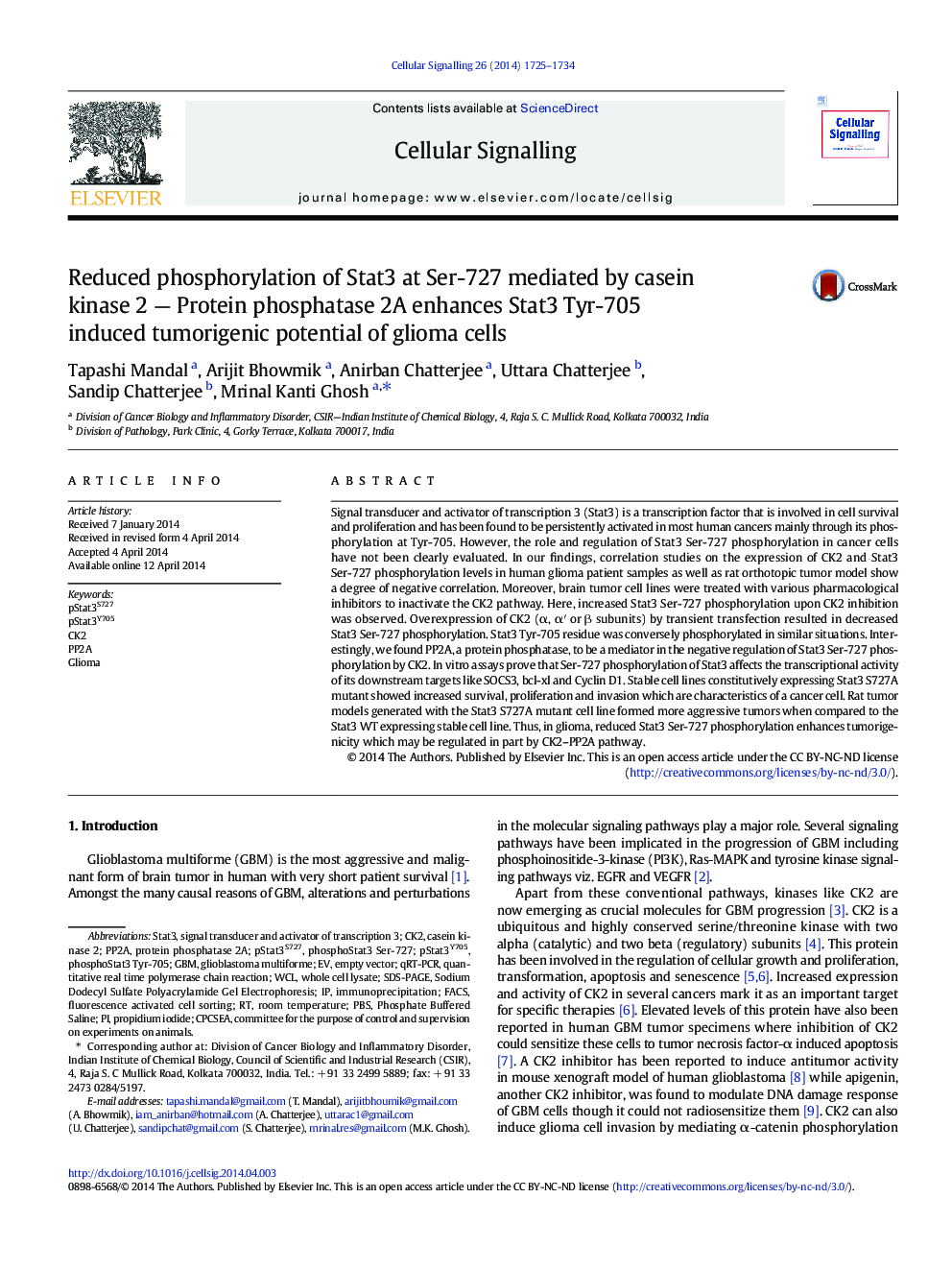| Article ID | Journal | Published Year | Pages | File Type |
|---|---|---|---|---|
| 10816025 | Cellular Signalling | 2014 | 10 Pages |
Abstract
Signal transducer and activator of transcription 3 (Stat3) is a transcription factor that is involved in cell survival and proliferation and has been found to be persistently activated in most human cancers mainly through its phosphorylation at Tyr-705. However, the role and regulation of Stat3 Ser-727 phosphorylation in cancer cells have not been clearly evaluated. In our findings, correlation studies on the expression of CK2 and Stat3 Ser-727 phosphorylation levels in human glioma patient samples as well as rat orthotopic tumor model show a degree of negative correlation. Moreover, brain tumor cell lines were treated with various pharmacological inhibitors to inactivate the CK2 pathway. Here, increased Stat3 Ser-727 phosphorylation upon CK2 inhibition was observed. Overexpression of CK2 (α, αⲠor β subunits) by transient transfection resulted in decreased Stat3 Ser-727 phosphorylation. Stat3 Tyr-705 residue was conversely phosphorylated in similar situations. Interestingly, we found PP2A, a protein phosphatase, to be a mediator in the negative regulation of Stat3 Ser-727 phosphorylation by CK2. In vitro assays prove that Ser-727 phosphorylation of Stat3 affects the transcriptional activity of its downstream targets like SOCS3, bcl-xl and Cyclin D1. Stable cell lines constitutively expressing Stat3 S727A mutant showed increased survival, proliferation and invasion which are characteristics of a cancer cell. Rat tumor models generated with the Stat3 S727A mutant cell line formed more aggressive tumors when compared to the Stat3 WT expressing stable cell line. Thus, in glioma, reduced Stat3 Ser-727 phosphorylation enhances tumorigenicity which may be regulated in part by CK2-PP2A pathway.
Keywords
PBSGBMCK2WCLqRT-PCRPP2ACPCSEASTAT3FACSSDS-PAGESodium dodecyl sulfate polyacrylamide gel electrophoresisempty vectorImmunoprecipitationRoom temperaturePhosphate buffered salinefluorescence activated cell sortingwhole cell lysatesignal transducer and activator of transcription 3quantitative real time polymerase chain reactionprotein phosphatase 2APropidium iodideCasein kinase 2Glioblastoma multiformeGlioma
Related Topics
Life Sciences
Biochemistry, Genetics and Molecular Biology
Biochemistry
Authors
Tapashi Mandal, Arijit Bhowmik, Anirban Chatterjee, Uttara Chatterjee, Sandip Chatterjee, Mrinal Kanti Ghosh,
